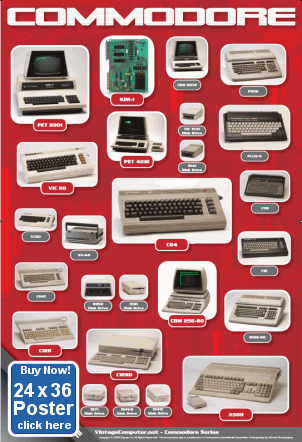 VC Blog | Contact
VC Blog | ContactROBOTS - Did the predictions come true?
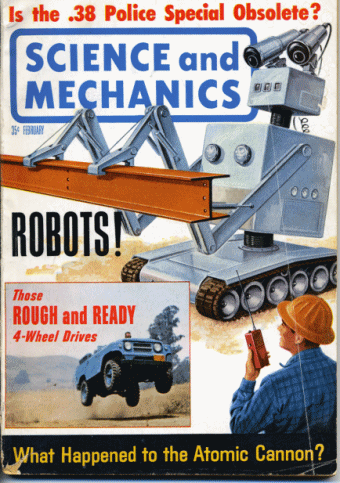
Feature photo from Science and Mechanics Magazine February 1963.
On my way to the Vintage Computer Festival 9.0 I stopped into a small antique store and found a copy of Science and Mechanics Magazine February 1963 with a post-war sci-fi-looking robot on the cover. In an era where computer-controlled robots were often just concepts on the drawing board, this article provides a glimpse of the future of robot technology.
Did robots take over? Click here to enter your comments. Below is a transcript of the entire article with pictures.
Will Robots Take Over?
Twenty years from now the machines probably wouldn't let us print this.By Charles Remsberg
Mechanical-armed zombies with TV-camera eyes and electronic innards have graduated from the fantasy laboratories of mad scientists into the world of reality. Today, robots are equipped to:
The annual retail robot market is $5-10 million and is expected to leap to more than $3000 million by 1980. Is there a danger that these clanking, whirring automatons will "take over?"
The answer, in some respects is yes. Before long, robots may be widely used to run power tools, fight fires, hunt sunken treasure, do housework, form ocean bottoms, perform assembly line jobs, even serve as informative playmates for children.
Few robots today are shaped like man, as they are in movies and science fiction. But many do have arms, legs, eyes, and mobility. And all perform tasks that otherwise would be done by human beings.
they perform chemical experiments, fetch and carry "hot" materials, repair equipment, and remove sources of radioactive contamination at atomic reactor sites.
In a nuclear attack - if there were anyone left to throw switches on the control consoles - robots could be sent into disaster zones to rescue victims and scrape away fallout dust - while the operators remained in safe locations.
Two general types of these weird devices are already being used at nuclear installations.
Most common are "master-slave" manipulators- electronically controlled mechanical "arms" and "hands" which perform tasks by aping an operator's finger and arm movements.
Rarer but more versatile for some jobs are the mobile robots, such as Little Ranger produced by General Mills, Inc. This fancy man-on-wheels has TV cameras for eyes and specially jointed arms to reach around and under objects.
Controlled by an operator at a remote control console through triaxial cable, it moves on multi-grooved V-belt tracks. With a maximum speed to 100 ft. per minute, it can pull an 800-lb. load, move over minor obstacles in its path, climb a 25-degree slope, and pick up heavy materials in it's clamping claw.
Like men, it can use drills, saws, wrenches, cranes, knives, hammers and scissors. Unlike men, it requires no coffee break, no sleep, no encouragement, and no mental stimulation to keep it from getting bored.
Robots also play protective roles as we reach farther into space.
Now space scientists are looking to robots to conduct a thorough investigation of the moon's terrain to assure human survival once men are landed there. Space General Corp. already has a working model of a contact Moon mobile that open up into a spider-like crawler. The company says this device could be included in the Surveyor lunar shot scheduled for next year.
The 135-lb. robot, capable of carrying 26 lbs. of instruments, can move at about 3 mph and step over 6-in. obstacles with its six legs. Its electric power is supplied by an array of solar cells mounted on large folding panels above its chassis.
Operators on Earth could control and watch its movements through a stereo-TV system and could also maneuver the robot's mechanical arm to examine objects of interest.
Other instruments might be included to "fee" surface dust or rock, bore out samples of the moon's soil, register quakes and meteoric impacts, record temperature, and in general tell man first-hand what to be prepared for when he lands.
Dr. John Clark, manager of the Hughes Nuclear Electric Laboratory, which is working on a lunar robot claims that: "Leaving out the purely political advantage of saying you had a man there, remote devices can do a better job in space than man."
Moonmobile
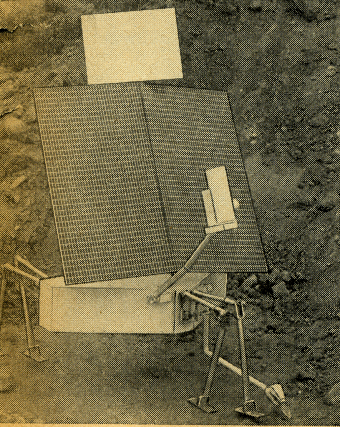
Moonmobile, a roving lunar vehicle. This robot will carry 26 lbs. of instrumentation to investigate the surface of the moon at a crawling gate of 3 mph. Solar cells will supply the power (cells are shown extended) and stereo TV will control communications and motion. Robot was built by Space General Corp.
Robots are also proving superior explorers beneath the sea.
The principal ocean-going robot now used commercially is the Sea Dog, designed by Vare Industries. Used at depths up to 2000 feet, this box-shaped device is valuable in making attachments for lifting submerged objects and in surveying submarine telephone cables.
Remotely controlled from an operating console via a small multiconductor cable, it is capable of hovering at any depth and relaying pictures of what it sees. Recently, it make the world's first TV firm records of deep-laid cables and revealed many unknown aspects of environmental stress and strain, marine life encrustation, and fishing trawl damage.
Possibly the lst persons ever to imagine they'd benefit from a robot-type mechanism are the Army's enlisted men. But now under investigation for the Army at General Electric is the Pedipulator, which the military may use to tote heavy supplies over rugged terrain.
This walking vehicle, with 12-ft. legs and electro-mechanical arms, will resemble, operationally, the master-slave devices now used at atomic installations. Using the principles behind GE's Handyman manipulator (robot hand), which initiates operator's hand and arm motions, the 18-ft. tall Pedipulator will copy leg movements of a "drive" sitting in its cab-multiplying his strength and power of locomotion. It may even pick itself up when it falls.
"When transporting men or supplied, two or even three of the machines might work together, much as men carry people or material between them on poles," a GE spokesman told SCIENCE and MECHANICS recently.
Another Army development is the Motile Target, a radio-controlled lifelike, full-sized "man," produced by Aircraft Armaments, Inc. for use as a small arms target.
Moving forward like an enemy, the three-wheeled robot runs upright, crouches, crawls- or collapses when a bullet hits a "vital" spot. The collapse is caused by an electrostatic charge from the bullet being carried by a conductive paint coating to electronic components inside the styrofoam vehicle.
Consolidated Controls Corp., for example, produces Unimate, a stationary box with a long, moveable arm and two steel fingers and a magnetic "memory" drum that can keep track of up to 200 different movements.
To show this robot its task, an operator manually guides it through each step once. Then it automatically performs the same movements over and over.
It can handle some 500 different types of operations, including welding, lathe loading, forging, packing, conveyor feeding, assembling, tightening nuts and screws, and spray painting. And it claims a positioning accuracy within 500/1000 of an inch.
ALso cutting manpower requirements is a robot painter developed las year by the Esso Research and Engineering Co. Guided by an operator using pneumatic control, the tank-shaped magnetized device can crawl across vertical and horizontal metal surfaces at 30 feet per minute. A pressurized roller at the rear spreads pain after the surface has been prepared by a mechanical chipping tool.
Four of these robots could paint a medium-sized ship in an estimated 16 man days - compared to about 200-man days required by humans. The cost could be sliced in half.
What will happen to the workmen who will inescapably be replaced by such devices?
It would be comforting to think that they will simply become employed making and repairing the robots that displaced them. But such many not be the case. Scientists say it is now theoretically possible to build machines that duplicated and repair themselves.
Further, MIT Prof. Claud Shannon claims it is only a matter of time until we invent robots that can "produce ideas new to mankind." When this happens, thinkers as well as unskilled, semi-skilled, and skilled laborers may find themselves giving in to machines.
Even many parental duties may be taken over by robots. One British scientist has predicted that electronic "playmates" with vast stores of information taped into memory banks will "grow up" with youngsters of the future, scampering after then in the nursery and on the playground to recite useful bits of knowledge.
Fighting such trends, however, is probably as futile as was resisting major scientific developments of the past. As one researcher puts it: "These things are as inevitable as the year 2000 itself." -end-
More Pictures:
General Mill's Little Ranger mobile robot immune to radiation.
Argonne National Laboratory robot manipulates a drill using cameras for eyes
The hand of "Handyman" is capable of grasping an object in a manner similar to human hand.
GE's "walking vehicle" can move across rugged terrain at 35 mph in a walking motion
Waldo enables scientists to manipulate radioactive materials in the Nuclear Radiation Lab at Republic Aviation Corp.
Amiga 3000
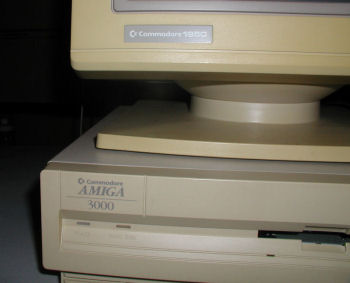
Click Image for larger version
This Amiga 3000 is not yet functional. I am trying to recover the hard drive.
On the Work Bench - Nov 2006
These are some of the computers and things that I am currently working on, or have recently picked up. Check my Vintage Computer Blog for updates, or post your questions.Cromemco System One
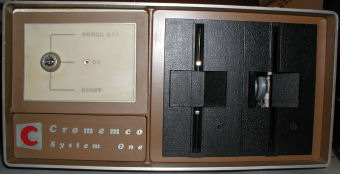
Click Image for larger version
Dual drive model. For more about this system, View Blog.
Tandy 1000 HX
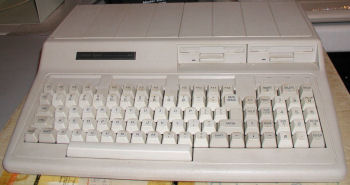
Click Image for larger version
Dual drive model. Boots to internal ROM: MS DOS 2.11 and "Personal DeskMate" application.
Computer Lib / Dream Machines
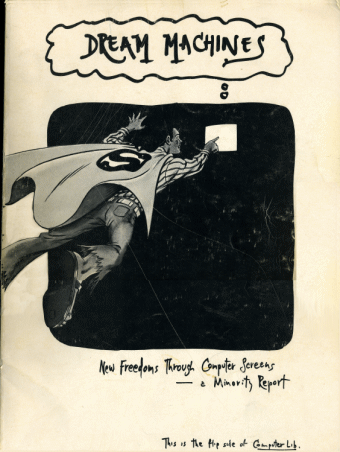
Click Image for larger version
Self-published in 1974, Computer Lib / Dream Machines by Theodor H. Nelson is a must-read for any computer historian!
Here is an example - an article about Hypertext...early 70's style!
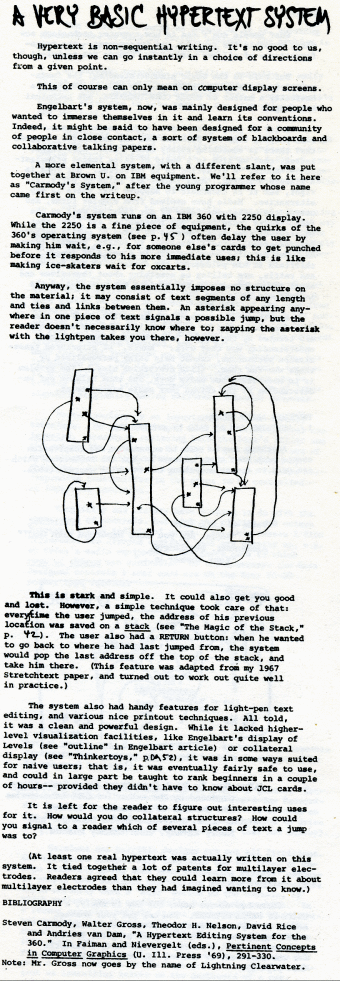
Classic Computing Items for Sale:
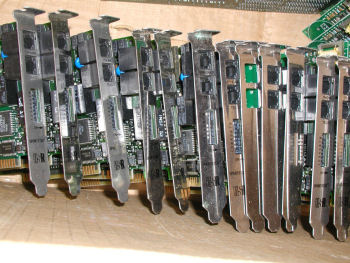
| CBM Commodore B Series Software (B-128 / CBM 700) | ||
| Superscript II Word Processor | $29.99 | |
| Superbase Database Manager | $29.99 | |
| Commodore Advanced Business Systems (CABS) Acccounting Suite: Accounts Payable, Order Entry, Accounts Receivable, General Ledger (4 binders) | $29.99 | |
| More CBM Commodore Items | ||
| Commodore B-128/700 Programmer's Reference Guide - Protecto - Everything you need to know about the B line! | SOLD OUT | |
| B Series Commodore Users Guide - View Image | $39.99 | |
| Commodore Users Guide Series 8000 | $39.99 | |
| Commodore BASIC Users Refence Manual Version 4.0 | SOLD OUT | |
| Commodore CBM Expansion Memory Board 64K Expansion Kit for PET 8032 (NOS) | SOLD OUT | |
| Commodore PET Keyboard (NOS) for 2001 -N, 3000, 4000 Series | SOLD OUT | |
| Other Commodore CBM Power supplies, software, parts, etc. | Contact Me | |
| Tandy Items | ||
| Aeoromp Double Density Controller for TRS 80 Model 1 Expansion Unit (NOS)- details | SOLD OUT | |
| Model III / Model 4 (non-gate array only) RS-232 KITS details | SOLD OUT | |
| Model III / Model 4 (non-gate array only) RS-232 boards only | SOLD OUT | |
| Model III Aerocomp Diskdrive controller | $39.99 (free US Ship) | |
| Looking for Something Else? | ||
| Please check here first with special requests for Commodore, IBM, Tandy, Atari, TI, Apple computers, parts, components, and software. I have systems plus zounds of miscellaneous items for sale or trade. | ||
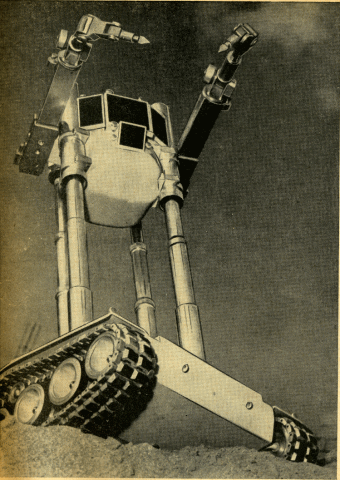
85-ton Beetle was built by General Electric
to work in "hot" environments. Man is stationed inside lead-shielded
cab and operates 16-foot arms. Beetle can rise up to 25 feet from ground
and rotate in a complete circle.
Commodore Plus/4 Software (mostly PAL)
Mario Brothers for the Commodore Plus/4 (PAL?). More stuff. Comments?
For more information about the C Prompt found at the top of each page, click here.
All photography on this web site is � VintageComputer.net/Bill Degnan and cannot be reproduced without permission.
Commodore Plus/4 Software (mostly PAL)
Mario Brothers for the Commodore Plus/4 (PAL?). More stuff. Comments?
Past Issues:
Before we switched over to a blog format, past page archives here:
Vintage Computer Festival East 3.0 June 2006
Commodore B Series Prototypes July 2006
VOLSCAN - The first desktop computer with a GUI? Oct 2006
ROBOTS! - Will Robots Take Over? Nov 2006
Magnavox Mystery - a Computer, or? Jan 2007
The 1973 Williams Paddle Ball Arcade Computer Game Feb 2007
The Sperry UNIVAC 1219 Military Computer May 2007
VCF East 2007 - PET 30th Anniversary June/July 2007
The Electronic Brain August 2007
Community Memory and The People's Computer Company October 2007
Charles Babbage's Calculating Machine December 2007
Vintage Computing - A 1983 Perspective February 2008
Laptops and Portables May 2008
From Giant Brains to Hobby Computers - 1957 to 1977 August 2008
Historic Computer Magazines November 2008
World's Smallest Electronic Brain - Simon (1950) December 2008 - Feb 2009
Free Program Listings Spring 2009
Computer Music Summer 2009
Popular Electronics Jan/Feb 1975 - Altair 8800 Fall 2009
Early Microcomputer Mass Storage Summer 2010
For more information about the C Prompt found at the top of each page, click here.
All photography on this web site is � VintageComputer.net/Bill Degnan and cannot be reproduced without permission.
